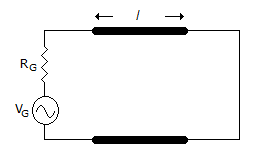Electronics and Communication Engineering - Microwave Communication
Assertion (A): Impatt diode is an avalanche diode.
Reason (R): Avalanche breakdown phenomenon occurs when a p-n junction is reverse biased.
An Impatt diode has n+ - p - i - p + structure and is used with reverse bias.
It exhibits negative resistance and operates on the principle of avalanche breakdown.
Impatt diode circuits are classified as broadly tunable circuit, low Q circuit and high Q circuit.
The impedance of Impatt diode is a few ohms. The word Impatt stands for Impact Avalanche Transit Time diode.
The features of Impatt diode oscillator are : frequency 1 to 300 GHz, Power output (0.5 W to 5 W for single diode circuit and upto 40 W for combination of several diodes), efficiency about 20%.
Its applications include police radar systems, low power microwave transmitter etc.
If standing waves are not there, whole of the power is absorbed by load.

In a klystron the resonant structure limits the bandwidth.
A TWT is a broadband device. Its main components are electron gun (to produce the electron beam) and a structure supporting the slow electromagnetic wave.
The velocity of wave propagation along the helix structure is less than velocity of light.
The beam and wave travel along the structure at the same speed.
Thus interaction occurs between beam and wave and the beam delivers energy to the RF wave.
Therefore the signal gets strengthened and amplified output is delivered at the other end of tube.
The main features of TWT are :
1. Frequency range - 0.5 GHz to 90 GHz
2. Power output - 5 mW at low frequencies(less than 20 GHz) 250 kW (continuous wave) at 3 GHz 10 MW (pulsed) at 3 GHz
3. Efficiency - about 5 to 20%
4. Noise - about 5 dB for low power TWT 25 dB for high power TWT
TWT is used as RF amplifier in broadband microwave receivers, repeater amplifier in broad band communication systems, communication satellites etc.

 and for parallel resonance βl = n
and for parallel resonance βl = n for both series and parallel resonance
for both series and parallel resonance